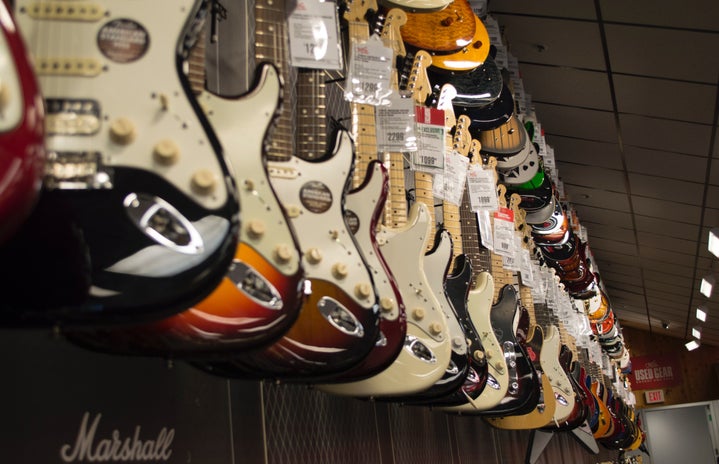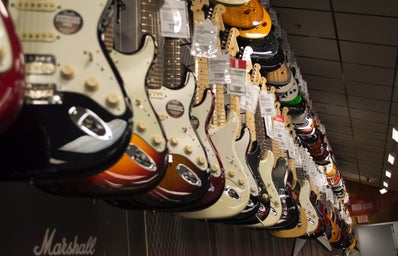Every morning, Marisa Ricucci, a sophomore at Montclair University, wakes up and plugs her phone into her Jeeps’ aux cord. Before heading out on the road, she browses through the Discover Weekly playlist on Spotify and analyzes a mix of new songs created just for her by the popular streaming service. When she finally arrives to campus, she turns on her wireless Beats headphones and scrolls through Spotify to find the new Billie Eilish album. She heads to her first class of the day, occasionally humming to the songs of her favorite music artist.
“I never listen to the radio” she says, “when I turn on the radio, the same songs play over and over again. But Spotify gives me the chance to find the music I actually want to hear, and I can play it wherever I go.”
Thanks to Spotify and other streaming services like it, the way we have been consuming music has changed forever. So long are the days of filing through tapes and CDs or listening to FM radio through the annoying static. With better sound quality, easier access, and a wider selection to choose from, a whole new generation of millennial music fans have adapted to a more modern musical experience. Video may have killed the radio star, but streaming is now defeating both.
Since music streaming has been around for some time, this approach to music has gradually broken new boundaries within the industry. According to BusinessofApps.com, a website that provides data for app businesses, there were 191 million active Spotify users in 2018. About 87 million of these users had Spotify Premium, a paid subscription that allows users to skip songs without commercials.
Jason Lipshutz, Senior Director of music at Billboard magazine, felt that streaming services tend to offer more than traditional radio does. “Spotify and other streaming services want to cater to fan behavior, and listener behavior, where as top 40 radio tries to cater fans listening habits by playing the hottest songs, or songs that they know have mass audience potential,” he says.
According to Lipshutz, music streaming services like to cater to listeners habits by seeing what they’ve already listened to, while offering playlists, artists and songs that are similar to who they already like.
Since streaming services are centered around the listener’s experience, it has become easier for music fans to pick and choose exactly what they want to hear. “It’s kind of a more personalized listening experience, which millions of people have really latched on to,” Lipshutz says.
A majority of those who are hooked on streaming music are the young people who grew up accustomed to the service’s immediate response and quick accessibility. “Instead of waiting around to hear your favorite song, you can now immediately hear your favorite song, and get recommended songs that sound just like it,” explains Lipshutz, “which is always what people want.”
Ricucci says that she uses Spotify every time she works on projects for her graphic design classes. “I have a playlist I made specifically for my art classes,” she says, “it’s basically a mix of songs that calm me down when I’m stressed, but sometimes I feel like I can’t do work without listening to music.”
Not only do younger music fans gravitate towards streaming for its instant gratification, but young fans of streaming are now beginning to shift trends within the industry all together. “Because younger listeners use streaming services, these streaming services have learned to underscore the generational appetite for hip hop music, which is now the biggest genre in popular music,” says Lipshutz.
Not everyone is a fan of streaming however. With the recent emphasis on digital music, the good-old-fashioned record store experience is a lot harder to come by. Even music artists themselves make less money off of streaming their songs as opposed to the downloading or buying of physical copies. According to BusinessofApps.com, one Spotify stream is worth about $0.006 to $0.0085 to an artist. Overall, Spotify accounts for 30% of the total revenue generated by the recorded music industry entirely, and 42% of the streaming market alone.
Apple Music has recently become another major player in the industry, and is now one of Spotify’s top competitors. According to statista.com, an online collection of statistics, Apple Music hit 56 million subscribers in 2018, and was ranked high on the list of streaming services used most often by young people. However, Spotify takes the cake when it comes to young music fans. Statista.com states that 38% of young people gravitate towards Spotify and the company seems to be rapidly pulling away from its competitors.
Despite the numbers, the streaming service war between Apple Music and Spotify has become a hot topic around college campuses lately. Sarah Murphy, a sophmore education major at The College of New Jersey, says that Apple Music is the best way to listen to all of her favorite songs. “I’ve been subscribed to Apple Music for a few years now and I love it,” she says, “I think it’s pretty easy to use and since I started using it, I have discovered some of my new favorite artists.”
As for Spotify, Ricucci thinks otherwise. “I’ve pretty much never bothered to try Apple Music because I feel like Spotify is just a lot more convenient,” she states, “I have so many playlists that I’ve made and can’t live without now. Plus I love the student discount that they have to offer.”
Regardless of which service you decide to use, streaming has allowed us to hold the world of music in our hands. Thanks to streaming, new artists can quickly gain popularity, and virtually anyone now has the power to create and promote their music. “Anyone, especially now, can post music to streaming services. Some are little easier than others, especially something like SoundCloud,” says Lipshutz, “You can just upload the song and that song can get millions and millions of hits, that is not the case with radio.”
The physical world of music may no longer be the norm, however, with the help of streaming, finding older music has been easier than ever. Ricucci says that if it were not for her subscription to Spotify, she would have never been able to discover some classic oldies. “On Spotify, I have a playlist of all classic rock songs, and I’ve never really listened to classic rock before this but I love it now,” she says.
Without a doubt, streaming has taken over the music industry. Music publications and fans alike have now been immersed in a world of on-the-spot music that has forever changed the way we listen. “It’s really exciting from our end, because it’s something that is different than waiting around for whatever the radio station will play or what people want to see on network TV,” says Lipshutz, “You have all these little byproducts of streaming in a way that has changed the face of popular music.”



